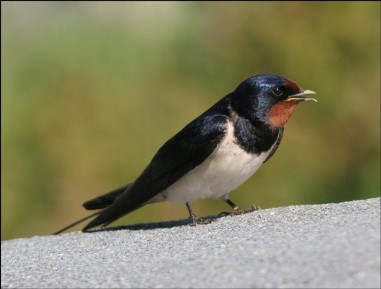Birds on the Move
Reports

As daylight hours extend and the temperature begins to rise, the lure of spring and early summer fills many birdwatchers with excitement. With winter's grasp finally loosened, birds react accordingly and the mornings are filled with the songs of birds vying for breeding territories. In addition there is a great movement north of birds. Species that have spent the winter with us like Fieldfare, Redwing, Wigeon, wintering geese and Whooper Swan move north, while species like Wheatear, Sand Martin, Swallow and Cuckoo that wintered far to the south begin to arrive after their journey north.
On a walk on Arran at this time of year there are many visible signs of this migration. On the shore groups of birds like Pied Wagtail, Redshank and Turnstone are feeding up, ready for onward movement, while on the sea both Great Northern Diver and Black-throated Diver are gathering. As per the photograph, you may be fortunate to see a group of Whooper Swan resting on the sea waiting for the weather to change before heading on to Iceland. Round our settlements and villages the signs are there as well, when the songs of summer visitors like Chiffchaff and Willow Warbler join those of the more familiar Blackbird and Song Thrush. These species, that are considered to be resident, also migrate and the birds that breed here are not necessarily the same birds that were seen during the winter. Other signs of this migration include the arrival of Swallow and House Martin and of course the call of the Cuckoo is one that suggests that summer is arriving. Even at the garden feeders migration can be seen in a species like Siskin whose numbers at this time of year increase and then decrease as wave upon wave move through with some staying to breed. At this time of year migration goes on at night as well as during the day. Many species migrate in the dark and the signs of migration are there, as the sounds of the birds calling to each other fill the night sky as they head north.
The phenomenon of bird migration has fascinated people since time immemorial with the arrivals and departures of birds marking the seasons. Migration has repeatedly prompted questions such as where do birds go and come from , why do they do it, how do they do it, how do they know when and where to travel and how do they find their way? Too many big questions for a short "Banner" article but a subject to which I will no doubt return again. In the meantime let me recommend Bird Migration by Ian Newton published in 2010 by Collins as part of their New Naturalist Library for an authoritative read on migration.

